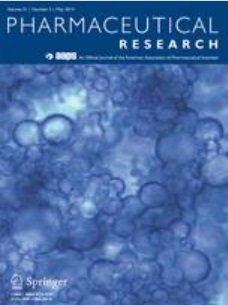Purpose
The study discusses the value of electrospun cilostazol-loaded (CIL) polymer structures for potential vascular implant applications.
Methods
Biodegradable polycaprolactone (PCL) fibers were produced by electrospinning on a rotating drum collector. Three different concentrations of CIL: 6.25%, 12.50% and 18.75% based on the amount of polymer, were incorporated into the fibers. The fibers were characterized by their size, shape and orientation. Materials characterization was carried out by Fourier Transformed Infrared spectroscopy (FTIR), Raman spectroscopy, differential scanning calorimetry (DSC) and X-ray diffraction (XRD). In vitro drug release study was conducted using flow-through cell apparatus (USP 4).
Results
Three-dimensional structures characterized by fibers diameter ranging from 0.81 to 2.48 μm were in the range required for cardiovascular application. DSC and XRD confirmed the presence of CIL in the electrospun fibers. FTIR and Raman spectra confirmed CIL polymorphic form. Elastic modulus values for PCL and the CIL-loaded PCL fibers were in the range from 0.6 to 1.1 GPa. The in vitro release studies were conducted and revealed drug dissolution in combination with diffusion and polymer relaxation as mechanisms for CIL release from the polymer matrix.
Conclusions
The release profile of CIL and nanomechanical properties of all formulations of PCL fibers demonstrate that the cilostazol loaded PCL fibers are an efficient delivery system for vascular implant application.
